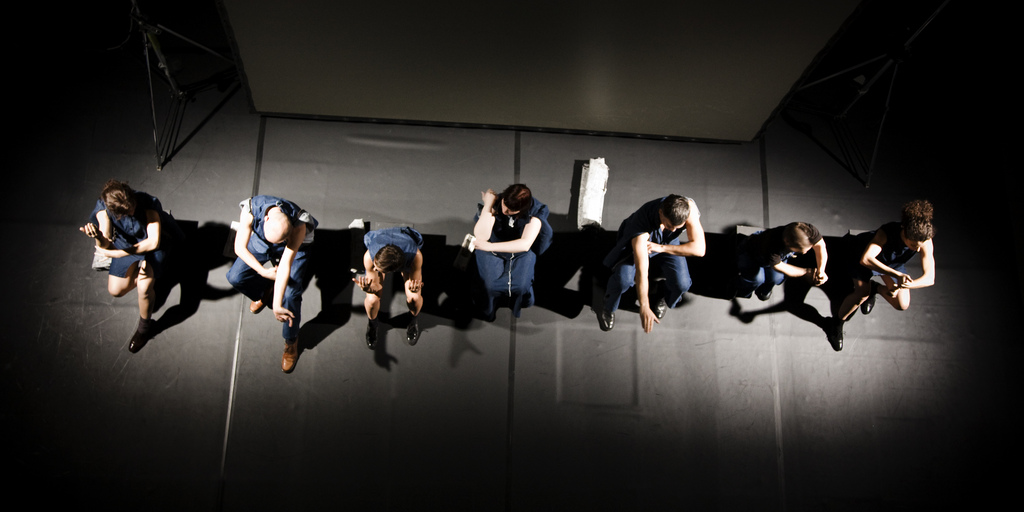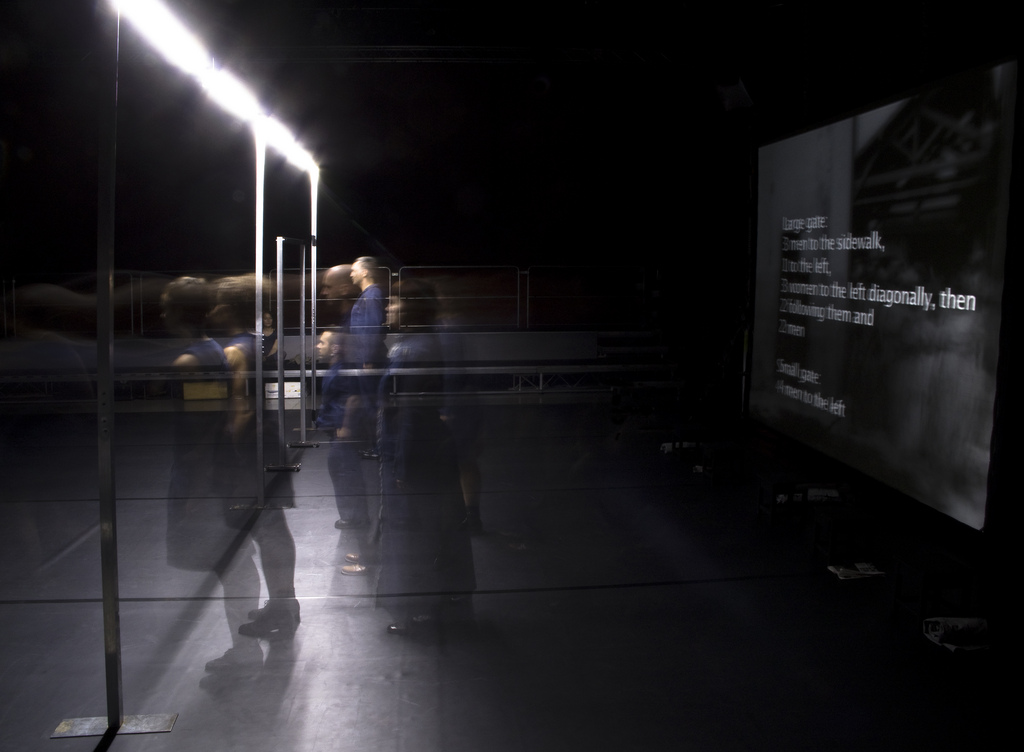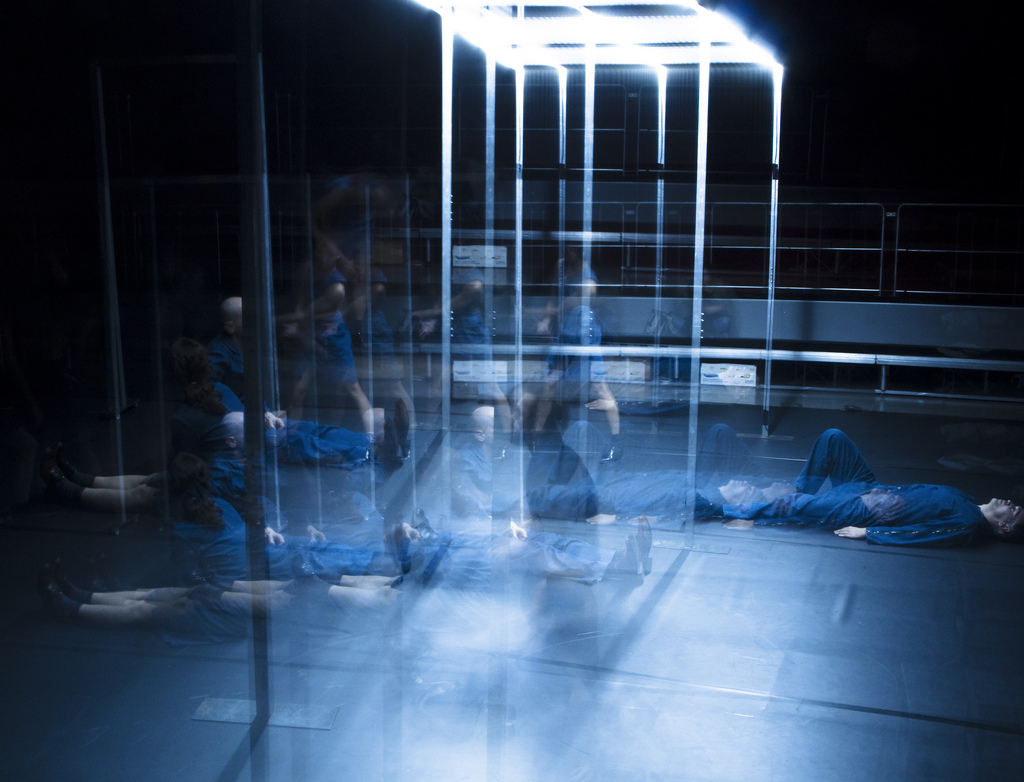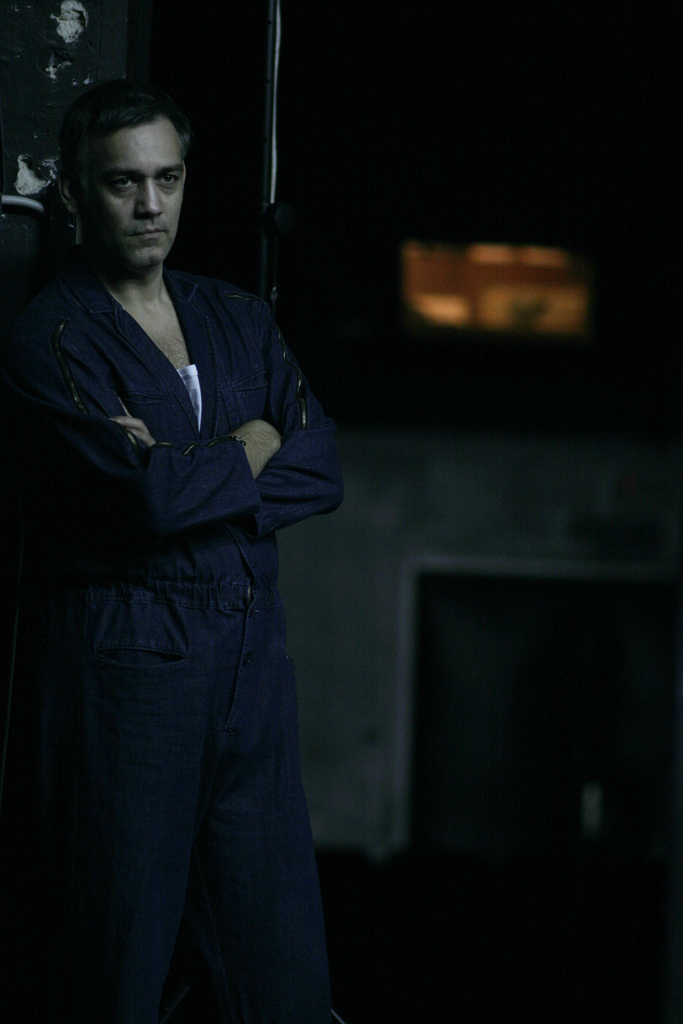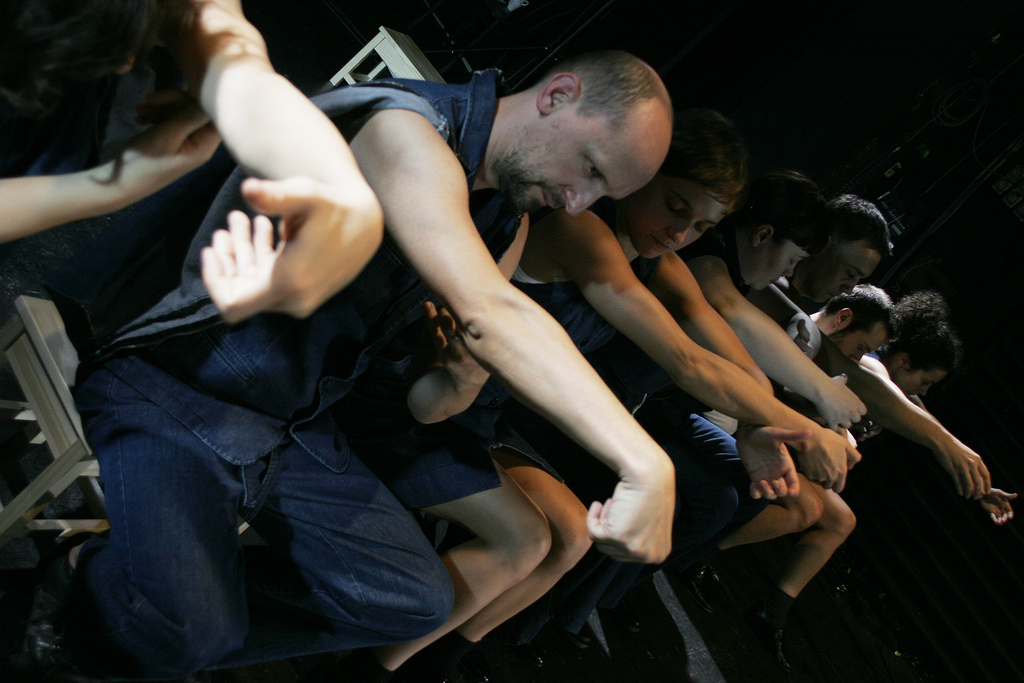En “1 poor and one 0” se retorna a la primera escena rodada en cine –“ Los trabajadores saliendo de la fábrica Lumière”: las puertas de la fábrica. Las imágenes en movimiento mostraban por primera vez a los obreros saliendo de su lugar de trabajo. El traslado de la plantilla desde el lugar de trabajo industrial al mundo del cine es el punto de partida para abordar la problemática relación entre el cine y la representación del trabajo. Desde sus inicios el cine ha tendido a dejar el ámbito laboral fuera del marco y se ha centrado en las historias de los trabajadores individuales una vez que han dejado su lugar de trabajo: sus romances, sus transgresiones, sus destinos en el curso de los acontecimientos mundiales. El cine comienza donde termina el trabajo. Partiendo de estas imágenes iniciales, “1 poor and one 0” explora los múltiples modos de dejar el trabajo a un lado. ¿Qué ocurre cuando estás cansado? ¿Cuál es el trabajo al que nos dedicamos para agotarnos? ¿Qué viene después del trabajo? ¿Más trabajo? ¿Qué pasa cuando no hay más trabajo? ¿Cuál es la complicidad entre la historia de la danza contemporánea y la historia de la post-industrialización? “1 poor and one 0” es una performance con doble función: mientras los intérpretes desarrollan ante la audiencia múltiples formas de disolución del sujeto trabajador, el público es arrastrado poco a poco a un proceso de transformación: desde el medio popular del cine al teatro político del populismo. El teatro agotado en las imágenes en movimiento, las imágenes agotadas en el teatro de movimiento. Un cambio de perspectiva.
Reseñas
The crystal-clear theatrical work whose methodical inexorability is reminiscent of analysis of the documentarian Harun Farocki, the perfection of dance performance and staging – make «1 [poor and one] 0» one of the highlights of this year’s steirischer herbst festival.
Willi Hengster, «steirischer herbst: Festival des Also Ob», Korso, November 2008
[…] In the [cave of] Dom im Berg Zagreb-based BADco., in full reflective mode and dressed head-to-toe in denim, tread the trail of the first film ever made, «Workers Leaving the Factory» (1895). In the puzzlingly titled performance, «1 poor and one 0», those people in blue used their bodies to contemplate issues of labor, film and dance in a post-industrial age, age of exhaustion and free time.
Thomas Wolkinger, «Der Wahnsinn macht so müde – steirischer herbst, die dritte Woche: Wir fressen Torte, wir saufen Schnaps», Falter, 24-30. October 2008
«1 poor and one 0» setts out from the first moving images in history – the workers exiting the Lumière factory – and it is a fitting coincidence that the first film image is also a document of the age of industrialization… this collaborative performance by BADco. should be read as an essayistic contemplation on the stoic movement through history of mechanization of labor, viewed from the particular perspective of film history.
Jürgen Berger, «Kuscheln zur Unglücksvermeidung, Das Unfassbare is spielbar: Mag Stewart, Gisèle Vienne und die Zagreber Performancegruppe BADco beim Steirischen Herbst in Graz», Süddeutsche Zeitung, 24. October 2008
«1 poor and one 0» is less a theater performance and more multimedia theory presented live, a performed ans sampled essay that starts out with the first film ever made, «Workers Leaving the Factory» and deals with consequences of labor faced by the subject and by history of contemporary dance.
Astrid Hackel, «Das Spiel vom Serienkiller», Tageszeitung online (taz.de), 23. October 2008
[…] BADco. in its production «1 poor and one 0» presents the working community, a world of labor in its passage into film. Commencing from the first film ever made, «Workers Leaving the Factory» from 1895.
Helmut Plebst, «Die Analyse seelischer Sumpfgebiete», Der Standard, 14. October 2008
The innovative moment of this production can be found in a seductive coupling of the lyrical and the didactic, the intended imbalance of the «scientific» (elucidated in lecture; declamatory; almost preaching) in contrast with the «poetic» (intimate, rebelliously illogical, rhetorically varied) approach to the body as an anti-machine.
Nataša Govedić, «The Speed of Light or Slowness of Hand», Novi list, 17. January 2009

